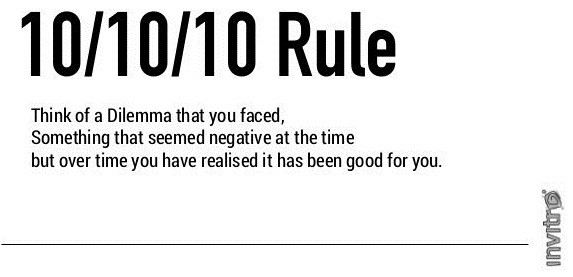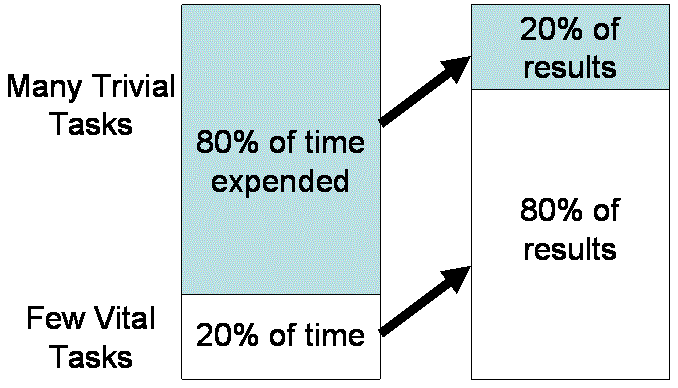Here are some mental models you should be using
Making smarter and better decisions are onerous tasks that impact us daily. We’re faced with thousands of choices on a daily basis, from a seemingly innocuous decision to skip the gym, to bolder decisions like changing one’s career. These intersections and options we choose aggregate over the span of our lives to define our future paths.
We are fortunate though, to be able to learn from powerful titans and legends who make such impactful decisions on a daily basis; both simple and tough ones. Many have adopted concepts ranging from from psychology to economics and fused them with their own experience.
Here we present some of the mental models that have helped them make smarter and informed decisions.
1. 10-10-10 Rule: Short Term Vs. Long Term
We’ve all been guilty of being myopic with our decisions – being shortsighted with impulsive choices while disregarding the long-term consequences. Sometimes, we do the reverse and get overly anxious over short term events or decisions. Suzy Welch, the author of the 2009 New York Times Bestseller book, 10-10-10: A Life Transforming Idea, came up with a transformative strategy by forcing us to reflect on our long-term selves and ask:
How will we feel about this 10 minutes from now? How about 10 months from now? How about 10 years from now?

10-10-10 forces us to regain control of our choices by making us more aware of our future goals while keeping them in sight at all junctures of our decision-making. Though it might be difficult for most of us to accept a less attractive short-term decision, the mental model helps realign our thinking to ensure our future benefit is weighed correctly.
So put away that doughnut and don’t skip gym day.
2. Pareto Principle: Being effective, not just efficient
After observing that 80% of wealth and land in Italy were controlled by only 20% of the population, an Italian economist, Vilfredo Pareto, developed his well-known Pareto Principle in 1896. The Pareto principle, also known as the 80/20 rule, states that for many events, roughly 80% of the outcomes come from the 20% of the causes. This widely applied phenomena appears in business as well: “ 80% of revenue comes from 20% of your customers”.
Tim Ferriss, a New York Times bestselling author, who abides by this principle once said, “Focus on being productive instead of busy”. Pareto Principle is a useful mental model that can be used to help us determine the most effective way to be efficient with our time. This will then enable us to decide what can come first or later without burdening ourselves with unnecessary workload.

3. The Eisenhower Box: What is important is seldom urgent and what is urgent seldom important
Dwight Eisenhower once sat in the most important seat in the world: he was the 34th president of the United States. Throughout his tenure as the leader of the free world, Eisenhower had made the toughest decisions and had lived one of the most productive lives. Eisenhower’s direction had led to the development of the Interstate Highway System, launch of the internet, the exploration of space (NASA) and the Atomic Energy act. He is long gone, but his work and more importantly his strategies and models in productivity and decision making stayed on for us to adopt and learn.
The Eisenhower matrix, also known as Urgent-Important matrix, prioritizes tasks by urgency and importance and then places them according to the quadrants in an Eisenhower box, mapping out the necessary steps to be taken next.
1. Urgent and important (tasks to be done immediately e.g. crises, deadlines, problems)
2. Important, but not urgent (tasks to be scheduled or to do later e.g. relationships, planning, recreation).
3. Urgent, but not important (tasks to be delegated e.g. interruptions, meetings, activities.).
4. Neither urgent nor important (tasks to be eliminated e.g. time wasters, pleasant activities, trivia.).
4. Circle of Competence: Leveraging on your strengths
“You have to figure out what your own aptitudes are. If you play games where other people have the aptitudes and you don’t, you’re going to lose. And that’s as close to certain as any prediction that you can make. You have to figure out where you’ve got an edge. And you’ve got to play within your own circle of competence.” –Charles Thomas Munger.
As eloquently said by Munger, this concept is rather self-explanatory and simple. Charles Munger is the vice chairman of Berkshire Hathaway, the conglomerate controlled by Warren Buffett. Warren Buffet, who shares the same sentiment, also emphasized the need of recognizing one’s strength in his 1996 Shareholder Letter – “You don’t have to be an expert on every company or even many. You only have to be able to evaluate companies within your circle of competence. The size of that circle is not very important; knowing its boundaries, however, is vital.”
5. Parkinson’s Law: Chasing Time
The essence of Parkinson’s Law dictates that the amount of time given to a task is equivalent to amount of time that task will take. This is true as we have all observed in school when we were given 1 week to complete an assignment and then taking the full advantage of that 1 week (even to the very last minute) to complete it.
As Parkinson’s Law observes that work expands so as to fill the time available for its completion, we can use this restriction to our advantage. By placing deadlines ourselves, we are able to shift the stress from distress to eustress. Breaking up a task into smaller activities and allocating a strict timeline to complete each milestone allows better time management and recognition of our performance capabilities.


















